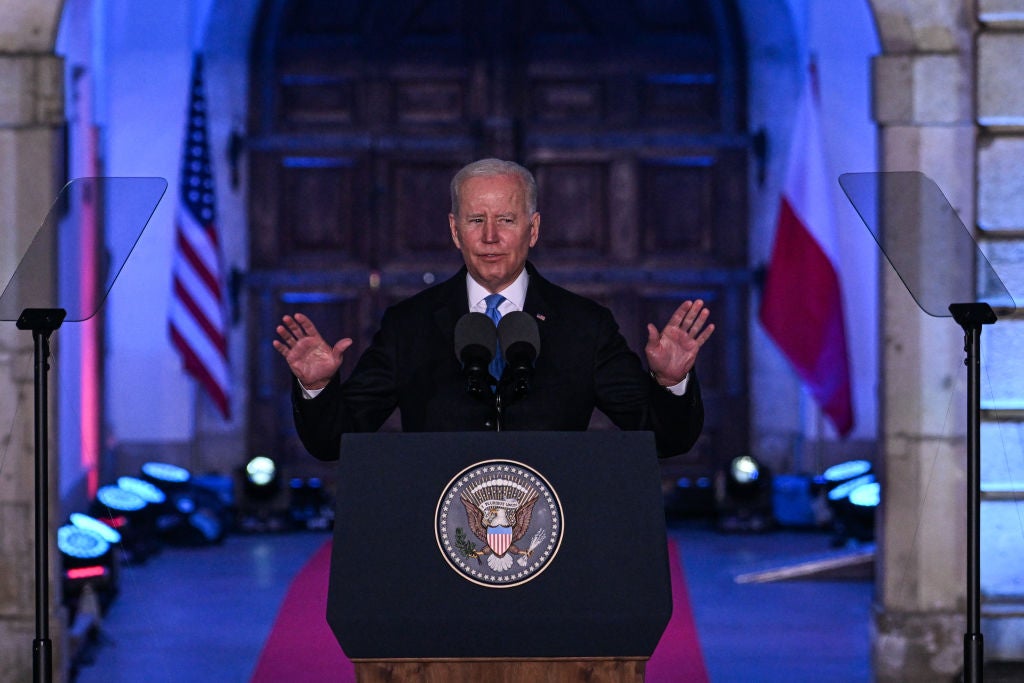It is no secret that since the turn of the millennium, the long-standing narrative around US manufacturing is that it has been in steep decline. Once a titan of industry, the US watched as manufacturing job numbers tumbled (falling from 17.3 million in July 2000 to 11.73 million in April 2020) and China picked up the slack on the global stage.
The resulting tensions between the US and China made addressing the failures of US manufacturing a key issue for both former President Donald Trump and current President Joe Biden to address during their presidencies. In the midst of a crucial mid-term election year, it seems that Biden’s efforts to rediscover the country’s manufacturing mojo are faltering.
Up until April 2022, the new president was resembling something of a white knight for the industry. For almost two years, between 2020 and 2022, the US manufacturing industry had been in a state of expansion – activity soared to a 37-year high in March 2021, according to data from the Institute for Supply Management (ISM) – but that rate of progress is now diminishing.
April 2022 saw factory activity grow at its slowest pace in more than 18 months. The ISM manufacturing index – which measures the US manufacturing industry across a number of factors including productivity and employment – fell to 55.4, the lowest reading since September 2020 and down from 57.1 in March 2022.
This begs the question whether or not US manufacturing will continue to improve under Biden, or if his initial push for improvement is fizzling out.
Strained supply chains and worker drop-off
It should be noted that any reading above 50 within the ISM index still indicates expansion, yet the slowing of this growth is a cause for concern. This is because ISM has attributed the slowdown to a rise in workers quitting manufacturing jobs and anxiety across US manufacturers due to China’s active zero tolerance policy on Covid-19, which is causing shutdowns in the country as it attempts to quell a wave of the Omicron variant. These shutdowns will put high levels of stress on global supply chains.

US Tariffs are shifting - will you react or anticipate?
Don’t let policy changes catch you off guard. Stay proactive with real-time data and expert analysis.
By GlobalDataA growing skills gap has been plaguing the industry too, and progress on this issue has also slowed. The ISM’s employment index fell by 5.4 points to 50.9 in April 2022, with the report saying: “Hiring and material availability continue to show signs of improvement, but factories are still struggling to hit optimum output rates – primarily due to high levels of employee turnover.”
For a president that has put the revival of manufacturing at the heart of his campaigning, and whose party is now forecast to struggle in the mid-term elections, this slowdown is troubling for Biden, and yet he doesn’t seem to grasp the key issues behind the problem.
Biden to the rescue?
When Biden took on the US presidency, he did so with ‘fixing’ US manufacturing highlighted as one of his key objectives. As such, he appears to be taking this manufacturing slowdown seriously and on 6 May announced the Additive Manufacturing (AM) Forward Program.
AM Forward is a partnership between Biden’s government and several large US original equipment manufacturers and small and medium-sized enterprise suppliers. The programme highlights a focus on implementing advanced technologies (namely 3D printing) in order to boost production and capabilities when it comes to manufacturing in the US.
While it can’t be denied that taking serious action to adopt advanced technologies and embracing industry 4.0 practices is nearly always a positive step, there seems to be an elephant in the room – a lack of talent. Despite AM Forward touting that it will train existing workers, there is little said about how it will provide a talent pipeline to address the US’s diminishing manufacturing workforce.
Who will run the machines?
In order to truly take advantage of investments in new technology, there must be a meaningful push towards education in STEM subjects – science, technology, engineering and mathematics – and a push to encourage the US youth to join the decidedly unsexy manufacturing sector, as opposed to the much more alluring tech companies. Biden has made some steps towards increasing manufacturing training through his $1.2tn infrastructure bill. Yet, since 2021, there has only been the suggestion that the bill will help with the materialisation of education-focused drives for US youth to enter the manufacturing sector, and nothing concrete has been announced.
That is not to say that these programmes are not being designed at the time of writing, but it seems odd that there would be an announcement of advanced technology investment before the question of who will man the advanced manufacturing machines in the future is answered. In 2021, Thomas Insights predicted that the US manufacturing skills gap will leave 2.1 million jobs unfilled by 2030, costing the country’s economy up to $1tn.
As factory output slows and worker turnover remains high, the announcement of new technology investments is indeed positive, but the pressing call to address the lack of a talent pipeline is becoming glaringly obvious and so far in Biden’s presidency has gone fairly unanswered.






